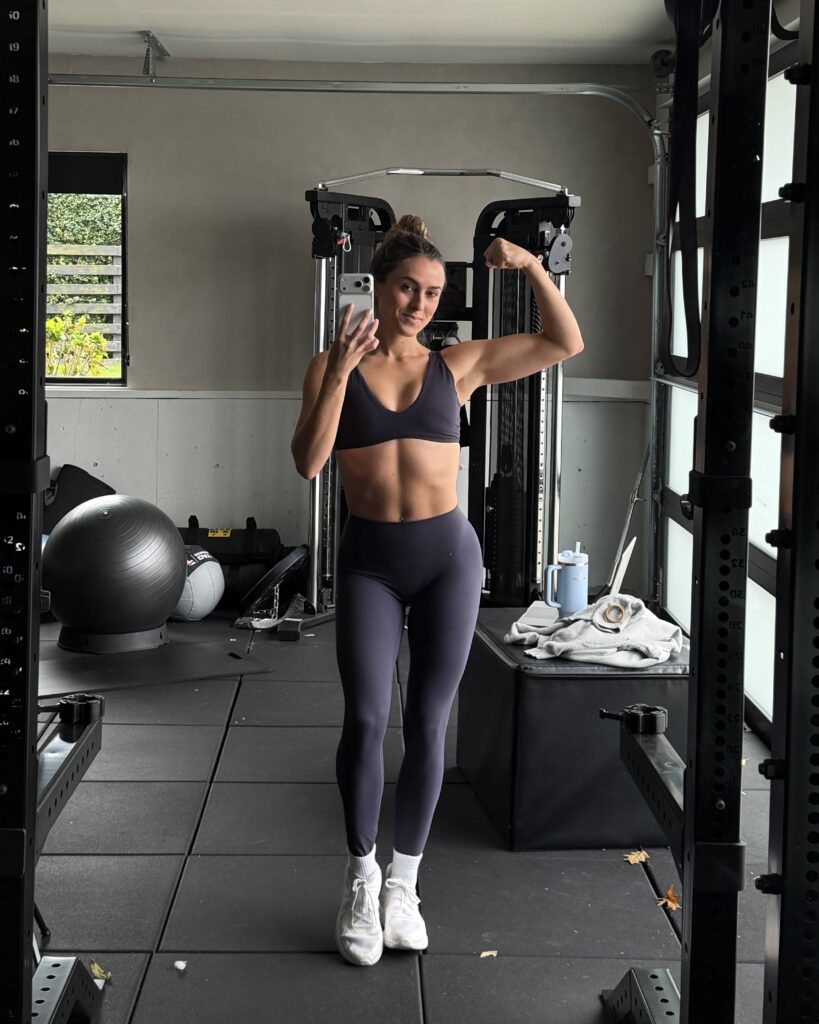
This blog dives into my postpartum fitness journey—how I rebuilt strength, restored confidence, and found balance 16 months after giving birth.
If you would’ve told me I’d feel completely back to myself within a few weeks of restarting workouts, I might’ve laughed—just because of the massive journey pregnancy was. By about 8 months postpartum, I was finally ready to commit, and by the time I wrapped up my first round of my 8-Week Strength Guide—around June 2025—I felt stronger and more confident than I had in a long time. Not just physically, but mentally too.
It took me a while to get there, though. I didn’t jump back into an exercise routine right after getting cleared postpartum. I took it slow—really slow. My early movement looked like neighborhood walks, gentle stretching, and a few breathing exercises to reconnect with my core and pelvic floor. I actually started working through my GOOD // SWEAT Pregnancy Guide in reverse from week 36 down, because those workouts are slow, intentional, and focused on exactly what you need postpartum—stability, breath work, and rebuilding strength safely.
Postpartum Exercise Recovery
Let’s be honest: the whole “bounce back” culture around postpartum fitness needs to go. I never felt pressured to rush back into workouts or try to look like my pre-baby self again, but I know many new moms definitely do because of what they see on social media. My focus was on healing—because the reality is, your body just did the most incredible thing imaginable.
Fun fact: your uterus expands up to 500 times its normal size during pregnancy. It’s not just your belly that stretches—your organs literally shift and your ligaments loosen to make room for your growing baby. So yeah, it takes time to recover.
The first few months after Hayes was born, I barely moved from my bed or the couch—and I’m proud of that. I rested, I bonded with him, and I let my body do what it needed to do to recover. I knew that laying a good foundation of rest would make returning to exercise so much smoother later on.
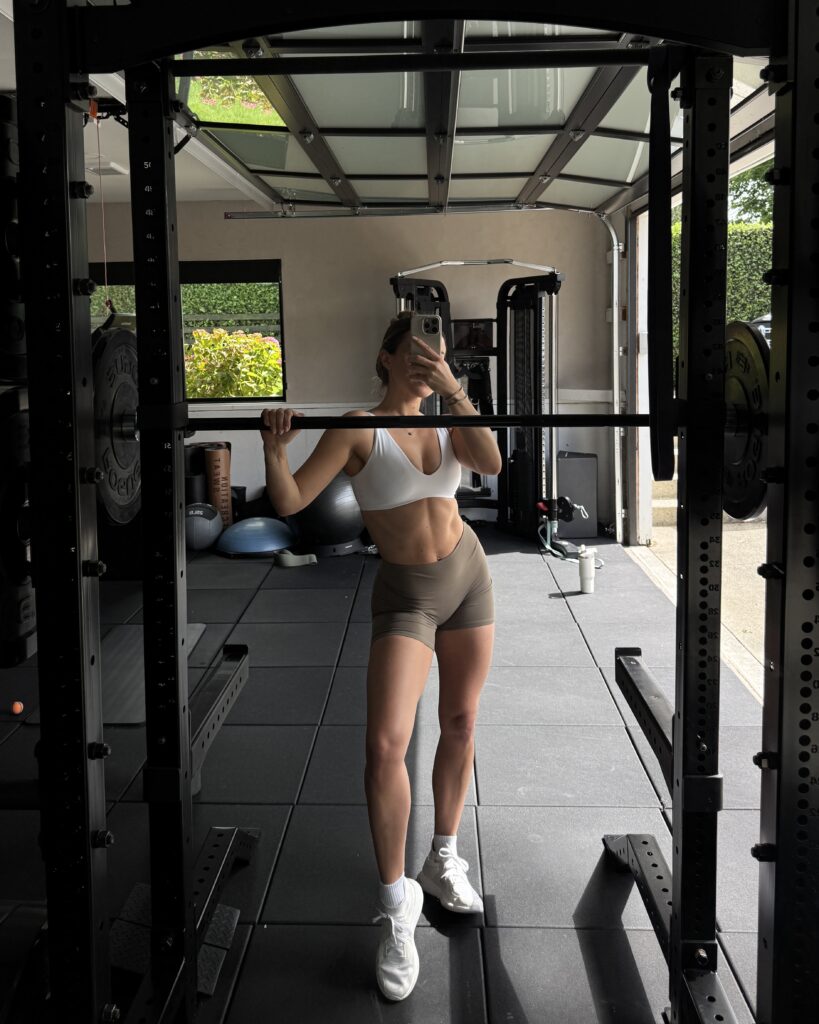
Why I Didn’t Find Workout Consistency Until 8 Months Postpartum
I didn’t have a real workout rhythm until about eight months postpartum—and I’m okay with that. Between learning how to be a first-time parent (which is a full-time workout in itself) and juggling deadlines for my next cookbook, I felt stretched pretty thin.
I moved when I could: stroller walks, random dumbbell circuits, or a few squats and stretches during nap time in our gym. It wasn’t perfect, but it kept me connected to movement. And the thing is, I didn’t feel like I was “falling behind.” I was just living real life, like so many new mamas are.
When My Postpartum Fitness Routine Finally Clicked
After wrapping my cookbook shoot in California, I told myself, “Okay, now it’s time.” We were done with traveling for a while and I finally had more free time after testing and re-testing 100 recipes & writing The High-Protein Plate. I started my 8-Week Strength Guide, and I’m not even lying when I say that after just one week in, I felt like myself again. Following a structured program gave me direction and accountability. It was something I’d been missing for months!
Even as a certified trainer, I thrive on structure with my workouts 90% of the time. One of the biggest reasons people struggle to stay consistent (myself included) is because they don’t have a clear plan. A good program removes the mental load. It tells you what to do, when to do it, and how to progress. That’s exactly how I designed my Strength Guides.
If you’re ready to get back into strength training safely, you can grab the same guide I started with on shopgoodeats.com. It’s eight weeks, four workouts per week (with rest days built in), and designed for real life. Most workouts are around 30 minutes to start and once you get higher into weeks 5-8, you’ll tend to spend about 45-55 minutes on the workouts. The first two days of the program are included in the photos on the product listing if you wanted to try them out.
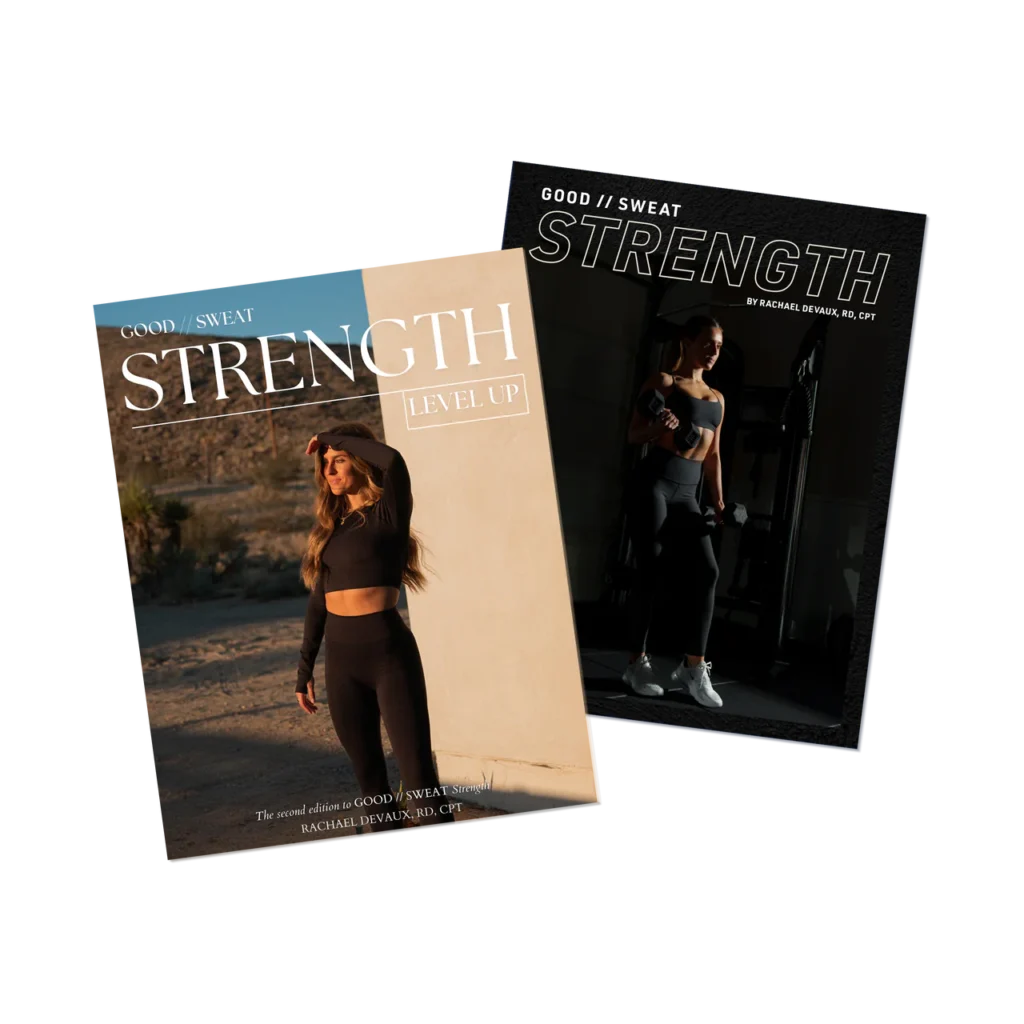
How I Train Now: My Postpartum Strength Training Routine and Progressive Overload Explained
In my postpartum fitness journey, this is the phase where I truly started to feel like myself again.
After finishing Strength Guide 1.0, I took a short break—lots of walking, incline treadmill sessions, and “move-how-I-feel” workouts. Then I went right back and did the same guide again about two weeks later. Repeating it is always a game-changer and what I recommend to anyone starting the program.
Here’s why: it’s all about progressive overload—the gradual increase of stress placed on the body during exercise. Each week, you aim to lift a little heavier, add an extra rep, or slow down your tempo for more control. Those tiny progressions lead to big results.
When I went through the program a second time, I already knew my Week 8 personal records (PRs). So yes, I did start back with bodyweight-only and very light weights around weeks 1-2, then around weeks 4-5 I could push slightly harder—an extra five pounds here, an extra rep there. By Week 7 or 8, I was lifting my heaviest weights yet and seeing real changes in my strength and muscle tone. It also really helps knowing what to expect going through a second time.
After that, I transitioned into Strength Guide 2.0, which takes everything up a notch—new strength splits, heavier compound lifts, and advanced progressions. It’s another eight-week program that’s challenging but realistic, and you can find it here.
My Go-To Fitness Accessories
Nutrition: How I Fuel My Strength
Here’s the thing—your workouts only go so far if you’re not fueling properly. Especially postpartum, when your body is rebuilding from the inside out.
I’ve made a big shift over the years toward high-protein, whole-food meals and eating enough to support my training. On days I lift heavier, I bump up my calories and carbs to help my body recover and rebuild muscle.
Protein is key and not just for building muscle, but for stabilizing hormones, keeping your metabolism high, and helping you feel full. Muscle is metabolically active tissue, which means the more muscle you have, the more calories you burn at rest. That’s why prioritizing protein (and lifting weights) is so powerful for body composition and energy levels long term. Plus, I got my results back from my Function Health blood test and my biological age is 16.4 years old!!! So I feel really good about how I’ve been living the past 10+ years. It really makes a difference to take care of your body through the foods you consume and the movement you make a priority with each day.

What a Typical Day of Eating Looks Like for Me As A Dietitian, Trainer, and Mom
Pre-workout: Purely Elizabeth blueberry oats made with water. Stir in 1/2 scoop of this protein powder (code ‘rachaelsgoodeats’ to save), then drizzle some almond milk over the top. This is typical for a lifting day for me. If it’s just a rest day or cardio day and I don’t need a lot, I’ll do an RXBAR in the early AM
Breakfast/Post-workout: Protein smoothie with 1.5 servings of Ritual protein powder, almond milk, ice, 1/2 frozen banana, 1/4 cup frozen blueberries, 1 heaping tbsp peanut butter, 1 tbsp ground flaxseed, 5g creatine, 1 tbsp psyllium husk
Lunch: Typically dinner leftovers of some sort or if I’m short on time I like to do a 5-minute chicken salad. Wild Planet canned organic chicken breast mixed with avocado, some pesto, s+p, hemp seeds, red chili flakes, and I’ll eat it with crackers or put it on toasted sourdough.
Snack: Chomps meat stick + nuts/seeds
Dinner: Something like my Healthy Taco Turkey Chili With Butternut Squash
It’s not complicated or restrictive—I just build every meal around protein and fill in with quality carbs and fats.
If you’re trying to eat more protein but don’t know where to start, my next cookbook, The High-Protein Plate, was made for you. It’s filled with 100 high-protein, gluten- and dairy-free recipes—from breakfast to dessert—to help you eat in a way that supports your body, hormones, and goals. You can pre-order it here.
Where I Am Now: My Postpartum Fitness Results 16 Months Later
I said this on Instagram recently, but I genuinely think my arms are the most toned they’ve ever been—and I’ve got a toddler to thank for part of that. Carrying Hayes everywhere is its own kind of strength training (hello, 25-pound kettlebell with strong opinions). It’s also hard to recognize how strong my core is right now. It’s so excited when you’ve been working so hard and actually see results!
But beyond my personal tiny toddler dumbbell, I credit progressive overload-style training and a high-protein, low-added-sugar lifestyle. I started years ago with my 7-Day Added Sugar Detox, which completely changed my approach to food and cravings. Over time, I’ve learned that eating better, training smarter, and resting more leads to the best results—not restriction or burnout.
At 16 months postpartum, I feel stronger, healthier, and more confident than I did pre-baby, and without any drastic habits like overtraining, under eating, etc.. I hope this gives you a little hope if you’re feeling stuck. You don’t have to overhaul your life. Just start small, find structure, and stay consistent 🙂
Tips for Postpartum Moms
- Don’t rush back. Healing is part of the process.
- Reconnect with your breath and pelvic floor first. Not sure what I’m talking about? Look into my Pregnancy Program. While I don’t currently have a postpartum training guide (yet), this pregnancy program offers tons of valuable information as I worked with a pelvic floor physical therapist to design each week. Starting the program in reverse is a great place to start postpartum.
- Follow a structured plan once you’re ready—it removes the guesswork. It’s kind of crazy how much time it saves too. I notice myself, when not following any program, scrolling on my phone more, taking extra breaks trying to think about what I want to work out next. There are so many benefits of following a workout program from a trusted source.
- Eat enough, especially protein. Restriction slows recovery. It can delay muscle repair, mess with your energy levels, and even impact your milk supply if you’re breastfeeding. Your body needs fuel—especially protein and enough calories—to rebuild strength and hormones after pregnancy.
- Take rest days seriously—they’re when you grow stronger. I’ve seen firsthand in college when I’d love to train 6-7x/week without any breaks, I had such a tough time seeing real results in the gym. Years later, when I learned to slow down just a bit and add more recovery days between my lifts/workouts, it was a difference of night and day. I became leaner, I noticed more muscle, I had more energy to lift heavier, etc.
- Your postpartum fitness journey doesn’t need to look like anyone else’s. Period!
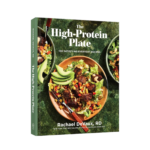

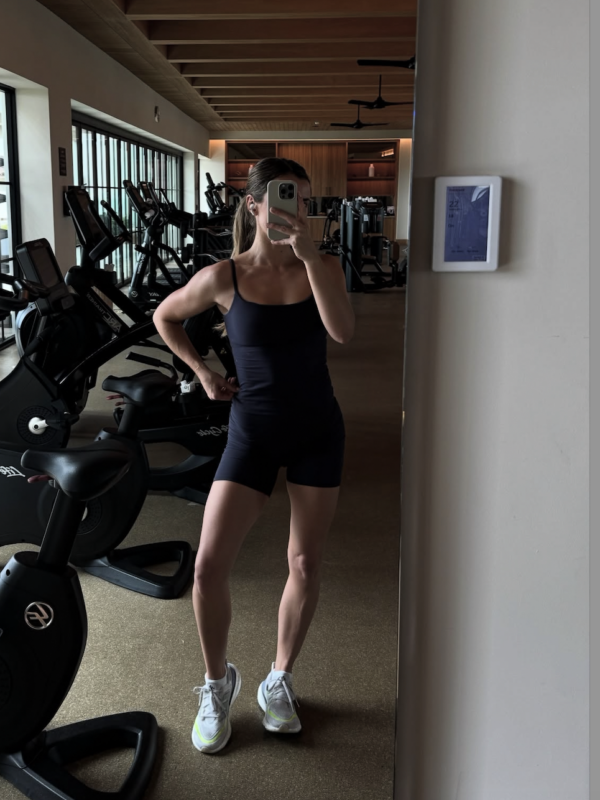
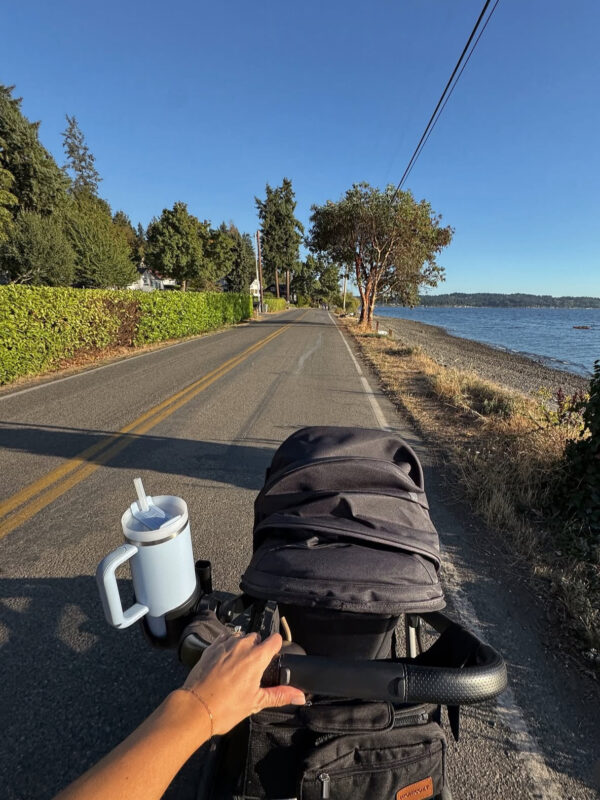
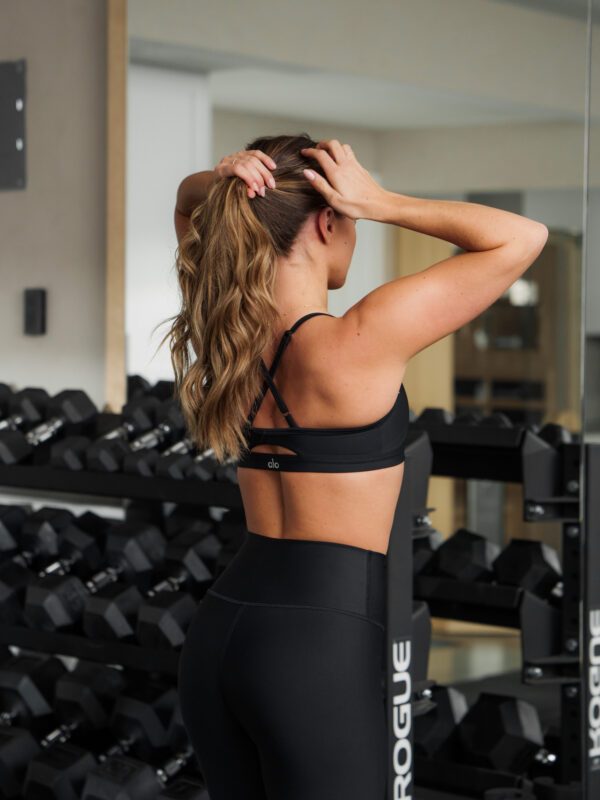
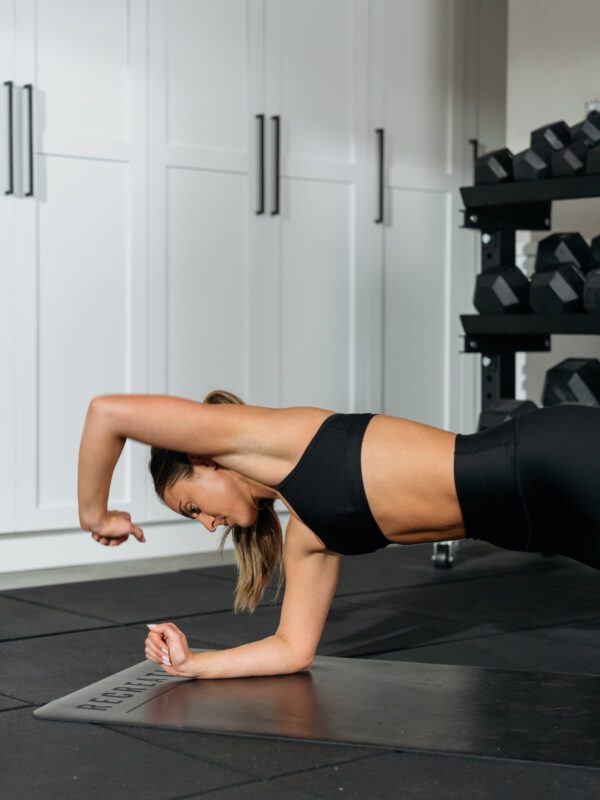








What about if you are 8 years postpartum? Would it make sense to try the pregnancy one in reverse (if I haven’t done too much strength training in years) or try the sweat guide? Thank you!